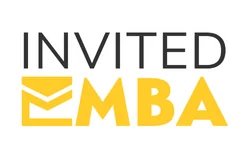
What do Tom Hanks, Albert Einstein, and Lady Gaga have in common?
At one point in their career, each of these famously successful people (and many others) experienced a psychological phenomenon known as imposter syndrome. Imposter syndrome causes feelings of doubt and insecurity. Some people describe it as feeling inadequate or undeserving of an accomplishment or feeling guilty of masquerading in a world they don’t belong.
But you don’t have to be a celebrity to experience imposter syndrome. In fact, Inc.com cited more than 80% of the workforce struggles with feelings of inadequacy during their career. Whether you’re new to a role or company, or you’re shifting from one industry to another, here are three ways to shake off feelings of insecurity and bolster your professional confidence:
-
Consider education opportunities like a mini-MBA
Upskilling is a popular buzzword in business and focuses on improving the transferable skills that benefit you in any environment – communication, teamwork, leadership, and critical thinking to name a few. Any opportunity to continue growing skills like these will be exponentially beneficial to your professional growth.
If you are struggling with imposter syndrome, upskilling through educational courses or business programs is a great way to not only gain additional strengths, but find confidence in the process.
When looking for courses or programs, prioritize opportunities with hands-on practice. Experiential learning or “learning by doing” builds muscle memory and is proven to create better leaders and managers. A mini-MBA that incorporates experiential learning is a quick, inexpensive way to dramatically improve your marketability and resume, giving you experience to talk about in interviews and lessons to rely on when feelings of doubt creep in.
In fact, Hannah Rivers pursued a mini-MBA to transition from marketing to a top five business. Now as a Resource Planning Manager at CVS Health, the business course Hannah chose helped her gain the additional business acumen and financial literacy to land a role at CVS and find overall confidence in business.
She said, “My mini-MBA really helped me overcome imposter syndrome. It’s easy to get caught questioning your abilities or experience. But being exposed to people from different industries and working together with them to solve real-life problems was so valuable and applicable to the real world. I feel confident going into this next phase of my life now.”
-
Build a strong network of ambitious professionals
Though networking can be time-consuming and challenging for some professionals, it is the best way to seek support when dealing with imposter syndrome. Building a community of other professionals on LinkedIn, at your job, or in your city creates a supportive environment for you to ask questions, share your experience, and learn from others.
The power of a supportive network not only benefits your confidence in the present, but it’s also an asset in future job searches and can provide mutually beneficial relationships years down the road. Once you establish a network, be sure to regularly offer your own help to keep relationships a two-way street.
After completing a 12-week program to enhance her financial literacy and business acumen, Gina Curran left the classroom after 20 years of teaching. But it wasn’t the program alone that helped her conquer imposter syndrome and transition into business. She spent time building a professional network of other career changers.
She said, “I was afraid at the thought of being in corporate, and I didn’t know if I could get there. But I did. Having a support network of other people making career changes really helped me get over imposter syndrome and confidently leave the classroom.”
-
Create a personal brand on LinkedIn
Creating and maintaining your personal brand has innumerable benefits to your career and self-confidence. Currently, the easiest way to do that is through LinkedIn.
Challenge yourself to complete a few easy steps to maximize your LinkedIn profile:
- Add a great headline, explaining your passions or industry – This is a great way to stand out to recruiters and other professionals immediately.
- Turn on creator mode – Turning on this feature allows you to add hashtags of things you’re interested in, tailoring your experience on the platform.
- In the “About” section, spend a few minutes thinking and writing about what makes you unique. Be sure to keep it brief and clean of all grammatical errors.
- Create a detailed experience section, using bullet points and strong action verbs to describe each of your professional job duties.
- Customize your LinkedIn URL (Example: linkedin.com/johndoe).
Once you have done these few things, LinkedIn’s algorithm will kick in and begin increasing your visibility to new connections. Then, you are ready to start posting regularly about topics in your workplace, problems you’re trying to solve, or even insightful conversations you have with your coworkers. You don’t have to look far for content. And make sure to add a relevant hashtag or two at the end of each post.
When other LinkedIn users read your profile and see your industry or topic-specific posts, they will begin to identify you as a leader and expert in your field. Creating a personal brand benefits your career long-term and creates a voice for you online that can build confidence, credibility, and name recognition.
Wherever you are in your career path, there are always opportunities to increase your skills and confidence. When dealing with feelings of imposter syndrome, developing a strategy to overcome your doubts (like the suggestions above) is the first step to your success.

 Katelyn Powell is a social media and content strategist, lifelong learner, and career development enthusiast living in Houston, Texas. She is passionate about equitable access to education and the Oxford comma. When she’s not writing or binge-reading true crime, she enjoys afternoon naps and providing wedding photography to Texas brides
Katelyn Powell is a social media and content strategist, lifelong learner, and career development enthusiast living in Houston, Texas. She is passionate about equitable access to education and the Oxford comma. When she’s not writing or binge-reading true crime, she enjoys afternoon naps and providing wedding photography to Texas brides





Questions about this article? Email us or leave a comment below.